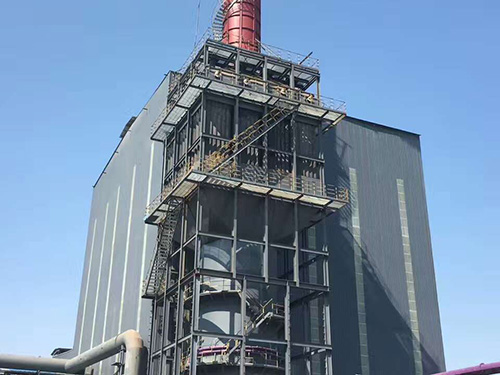Wet Electrostatic Precipitator EquipmentWorking Principle
The Working Principle Of Wet Electrostatic Precipitator Is Similar To That Of Dry Type, Both Of Which Use High-voltage Corona Discharge To Charge Dust Or Water Mist. The Charged Particles Reach The Dust Collection Plate Under The Action Of Electric Field Force. However, In Terms Of Dust Removal Method, Dry Electrostatic Precipitator Uses Mechanical Vibration, While Wet Electrostatic Precipitator Uses Flushing Liquid To Wash The Electrodes, Flushing The Dust Captured On The Dust Collection Plate Into The Ash Hopper And Then Discharged.
Structural Characteristics Of Wet Electrostatic Precipitator Equipment
(1) The Ontology Structure. The Wet Electrostatic Precipitator Mainly Consists Of Inlet And Outlet Flues, Dust Collector Housing, Guide Plate, Rectifier Grille, Anode Dust Collection Plate, Cathode Wire, Insulation Box, Flushing Water System, Power Supply And Control System. In Terms Of Structural Types, It Is Generally Divided Into Two Categories: Plate Type And Tube Type. The Plate Type Dust Collector Has A Flat Plate Shape, Good Water Film Formation, And Evenly Distributed Corona Wires Between The Plates. The Main Body Is Similar To A Dry Electrostatic Precipitator And Can Handle Horizontally Or Vertically Flowing Flue Gas; The Tubular Dust Collector Is Generally Composed Of Multiple Parallel Circular Or Polygonal Metal Tubes, With Corona Wires Distributed In The Middle, And Can Only Handle Vertically Flowing Flue Gas. The External Components Of The Wet Electrostatic Precipitator Are Made Of Ordinary Carbon Steel, And The Inner Surface Is Coated To Prevent Corrosion (based On Actual Reports). During Installation, Attention Should Be Paid To Controlling The Damage To The Inner Surface, Especially At Welding Points, Component Connections, Etc. The Exterior Of The Shell Does Not Require Insulation Because The Flue Gas Temperature Is Below The Saturation Temperature, So The Flue Gas At The Shell Also Hardly Cools Down. Overall, Tubular Dust Collectors Are More Efficient, Easier To Arrange, And Occupy Less Space Than Plate Collectors.
(2) Cleaning Method. Dry Electrostatic Precipitator Uses Vibration To Deposit The Accumulated Dust On The Dust Collection Electrode Into The Ash Hopper, While Wet Electrostatic Precipitator Sprays Flushing Liquid Onto The Dust Collection Plate To Form A Continuous Liquid Film. With The Flow Of Flushing Liquid, The Dust Is Flushed Into The Ash Hopper And Discharged. If The Dust On The Dust Collection Electrode Cannot Be Washed Down In Time, It Will Cause Problems Such As Decreased Operating Voltage, Corona Sealing, And Local Corrosion. Common Ash Removal Methods Include Self Washing, Spray Washing And Liquid Film Washing. Regardless Of The Type Of Flushing Method, The Large Amount Of Suspended Particles And Acidic Substances Contained In The Flushing Fluid, When Directly Discharged, Will Cause Secondary Pollution And Waste Of Water Resources. Therefore, It Is Necessary To Solve The Problems Of Grey Water Circulation And Water Consumption. It Is Recommended To Adopt Closed Circulation For Flushing Water




